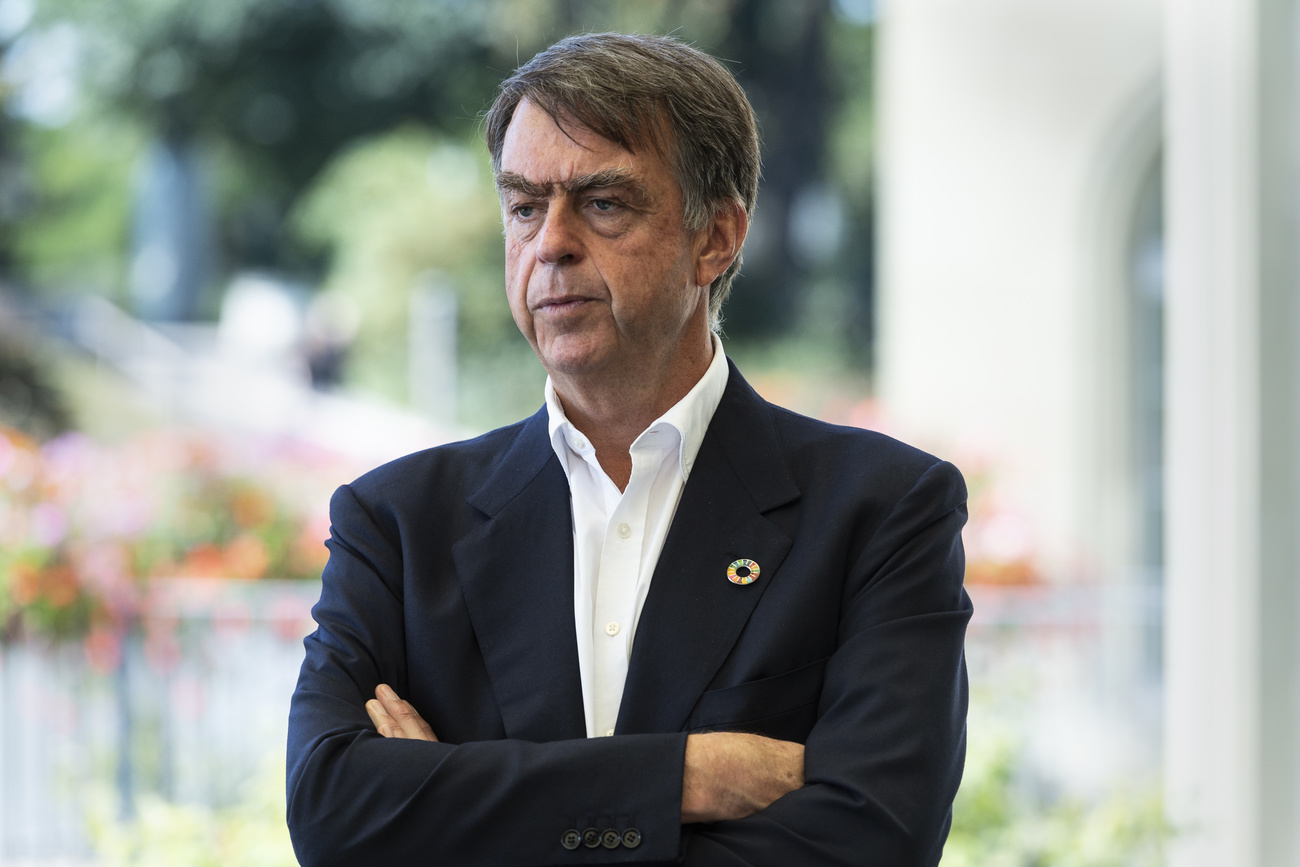Flowers use pollen power against greedy bees

Collecting pollen is a very important task for busy bees, but what helps protect plants from losing too much pollen? It could be chemicals, say Swiss researchers.
This has led a team of ecologists from the Federal Institute of Technology Zurich (ETHZ) to show – for the first time – that bees need to adapt physiologically to digest different types of pollen.
The research has caused quite a buzz – it has been published in the British Ecological Society’s Functional Ecology journal, which has called it “ground-breaking”.
It is known that many plants produce chemicals in their leaves to protect themselves against herbivorous insects and that many flowering plants have evolved flower structures which prevent pollinators from taking too much pollen. But what about pollen itself?
“Our background idea was that maybe plants actually chemically protect their pollen against bees,” the ETHZ’s Claudio Sedivy swissinfo.ch.
“But it’s hard to show that directly because pollen chemistry is very diverse and complicated.”
For this, he and his team came up with a clever experiment. Bees were used to take pollen from the nest of specialist bees which only feed on one of four specific plant species: buttercup, tansy, wild mustard and viper’s bigloss.
Researchers then fed the pollen to the larvae of two closely related generalist mason bee species, Osmia bicornis and Osmia cornuta.
In nature, these larvae would enjoy a diet of pollen from 18 and 13 species of plants respectively. In the experiment, the larvae were divided into groups and given only one of the four types of pollen. The results were then compared.
Major differences
Sedivy said the team was surprised at the big differences in the performance of the larvae.
“While the larvae of Osmia cornuta were able to develop on viper’s bugloss pollen, more than 90 per cent died within days on buttercup pollen. Amazingly, the situation was exactly inverse with the larvae of Osmia bicornis,” explained the doctoral student at the Applied Entomology group.
Both bee species performed well on wild mustard pollen, while neither managed to develop on tansy pollen, Sedivy added.
“As far as we know, this is the first study that delivers clear evidence that bees require physiological adaptations to cope with the unfavourable chemical properties of certain pollen.”
The results deliver another important piece of the puzzle in understanding bee-flower relationships, he said.
A next step is to determine why certain pollen is unsuitable for non-specialist bees.
The viper’s bugloss is known, for example, to contain comparably high concentrations of different pyrrolizidine alkaloids – toxic compounds used by plants as defence mechanisms. But to what extent these are harmful to developing bee larvae has not yet been studied.
Pollen snatchers
Plants have good reason to protect themselves as bees require huge amounts of pollen to feed their young – pollen that could otherwise be used by the plants for pollination, say researchers.
The pollen of up to several hundred flowers is used to rear just one larva and bees often take around 80 per cent of a flower’s pollen in one visit.
The bees – of which there are 20,000-30,000 species on the planet – store the pollen in their gut or in special hairbrushes, so very little is lost.
“Bees and plants have conflicting interests when it comes to pollen,” Sedivy said. “While most plants offer nectar to visiting insects as a bait for insects to transport the pollen from flower to flower, bees are very efficient pollen collectors.”
“Therefore, plants have evolved a great variety of morphological adaptations to impede bees from depleting all their pollen. This study provides strong evidence that pollen chemistry might be at least as important as flower morphology to constrain pollen loss to bees.”
In Switzerland bees are kept in various ways. There are about 19,000 beekeepers with 170,000 bee colonies. Migratory beekeeping is rare.
The most important honey plants are: dandelion, fruit trees, rape, robinia, sweet chestnut, as well as various honeydew-yielding trees, mainly coniferous and deciduous trees. The average honey harvest is about 10 kg per colony. Once in 10 years there are exceptionally high honeydew honey harvests.
Switzerland has a bee density of 4.5 colonies per square kilometre, which is one of the highest in the world. As bees are kept all over Switzerland the pollination of all cultivated and wild plants is assured
Source: Agroscope
The article is called: Closely related pollen generalist bees differ in their ability to develop on the same pollen diet: evidence for physiological adaptations to digest pollen by Claudio Sedivy, Andreas Müller and Silvia Dorn.
It was published earlier this month in the British journal Functional Ecology.

In compliance with the JTI standards
More: SWI swissinfo.ch certified by the Journalism Trust Initiative















You can find an overview of ongoing debates with our journalists here . Please join us!
If you want to start a conversation about a topic raised in this article or want to report factual errors, email us at english@swissinfo.ch.